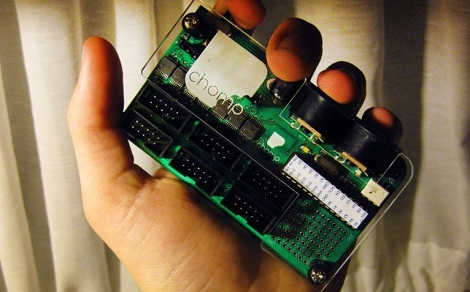
Although MIDI was originally designed for 1 MHz computers with 64 kB of RAM, it’s still an industry standard almost 30 years after its introduction. Even for electronic artists armed with a microcontroller, MIDI is old hat if you want to connect a few buttons up to a music workstation. What if you wanted to connect dozens of buttons and knobs to a bunch of MIDI hardware, though? Enter Chomp, the Configurable Hardware Open-source MIDI Platform.
[Max Justicz], an awesome pseudonym if we’ve ever heard one, built a MIDI controller that allows for 48 inputs for buttons, knobs, and any other electrical connection imaginable. The board is powered by an Arduino-fied ATMega328 and connects to your sensors through 2×5 ribbon cables.
If you’ve ever thought about building a monome MIDI controller, [Max Justicz] has started a Kickstarter campaign to put a few hundred Chomps out into the wild. It seems like a great way to build some controllers or simply to send stuff to MaxMSP. Either way, the Chomp is sure to be useful.
























